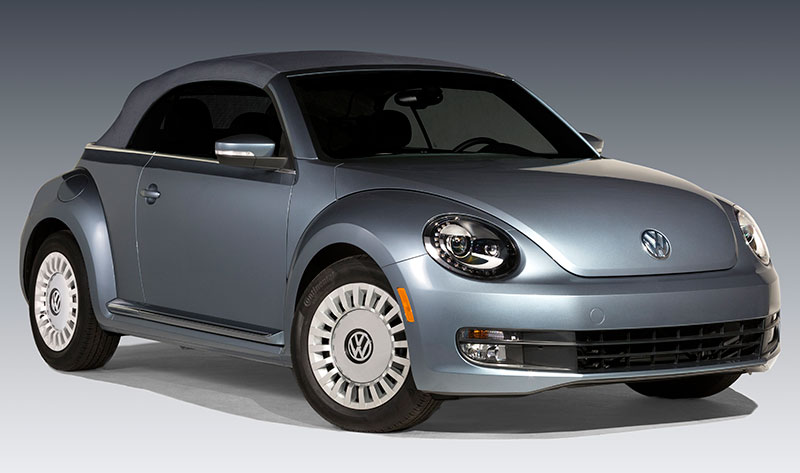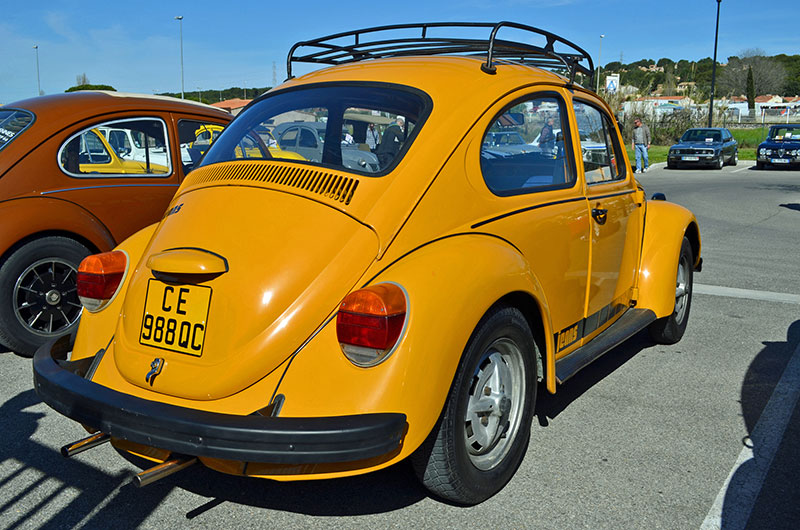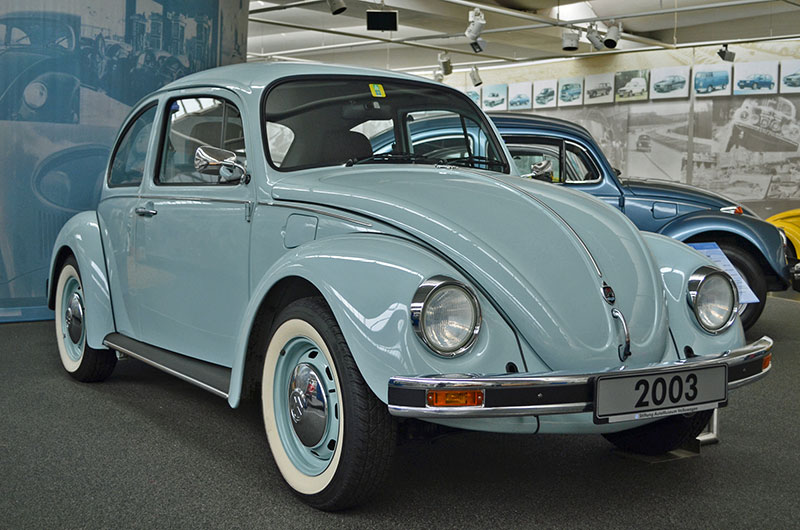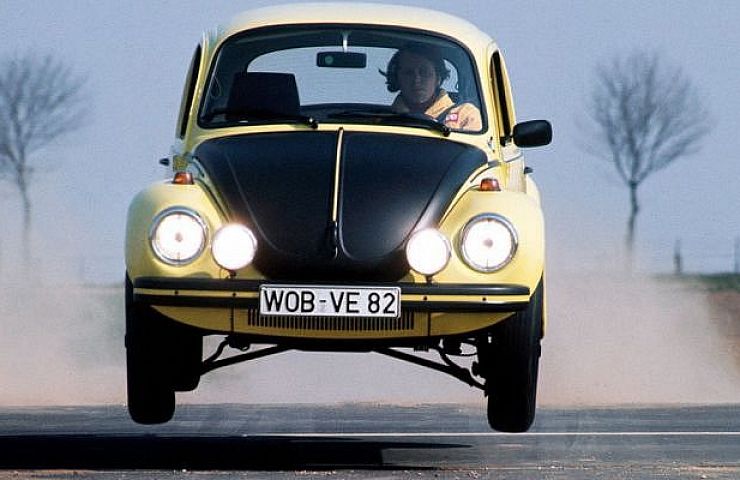Volkswagen introduced two new limited-edition Beetle models—called the Beetle Dune and Beetle Denim—at the 2015 Los Angeles Auto Show, which concluded yesterday. The Dune pays homage to the original Baja Bug, while the Denim is inspired by the limited-edition Beetle Jeans sold during the 1970s. The Dune and Denim models gives us a chance to look back at VW’s history of offering cool limited-edition models of the legendary Beetle.

Inspired by classic Baja Bug, the 2016 Beetle Dune Coupe offers a rugged addition—with sporty styling and new technology features—to the model lineup.

Paying homage to the 1970s Jeans Bug, 2,000 units of the 2016 Beetle Denim will be produced—available in Pure White or Stonewashed Blue. The convertible top resembles denim.
The original rear-engined Volkswagen Beetle was the most popular imported car in the United States during the 1960s. Widely praised as West Germany’s economic miracle, the Beetle effortlessly fended off competition from other European econoboxes including the Fiat 850 and the Renault 10. However, when a new wave of American and Japanese compacts sent sales sliding in the early 1970s, the Wolfsburg-based car maker had to turn to special edition models to lure buyers into showrooms.
The Super Beetle was, as its name implied, a thoroughly improved version of the original Beetle, but it undeniably had a difficult time hiding its age. Some buyers wanted a car that was more luxurious, some wanted to drive around in an economy model that didn’t look drab, while value-minded customers were often willing to sacrifice creature comforts for a lower price. Volkswagen took every demand into account as it designed limited-edition versions of the Beetle.
Introduced in 1974, the Sun Bug was offered as a Beetle, as a Super Beetle, and as a Convertible. It boasted upmarket features such as a sunroof, full carpeting, leatherette inserts in the seats, and wood trim on the dashboard. A full center console that included a cup holder and several storage trays could be ordered at an extra cost.

Volkswagen recently dusted off the GSR nameplate for a limited-edition version of the 21st century Beetle. Unlike the original, the new GSR is sold in the United States.
Beetle sales were dropping across the pond, too, so buyers in Europe also had access to interesting special edition models during 1970s. One of the most sought-after editions is the GSR, an acronym that stands for Gelb Schwarzer Renner (Yellow Black Racer in German). Based on the 1303 S, it gained a rally-inspired two-tone yellow and black paint job, wider steel wheels, a three-spoke steering wheel, and sport seats. Volkswagen didn’t make any major modifications to the 1.6-liter flat-four, but every GSR shipped with a list of shops that were approved by the company to tweak the engine.
While German production of the Beetle sedan stopped in 1978, demand for the Karmann-built Convertible model encouraged Volkswagen to keep it around for another two years. When it was retired, Volkswagen marked the occasion with a limited-edition model called Epilog Edition that was finished in black and equipped with black upholstery on the seats and the door panels. An Epilog Edition was sent to every single Volkswagen dealer in the United States, which means about 900 examples were shipped.

Re-released several times, the Beetle Jeans was one of the most popular limited-edition versions of the Beetle.

The Beetle Jean’s seats and door panels were upholstered in (you guessed it) dark blue, jeans-like upholstery.
Volkswagen continued offering limited-edition Beetles in Latin America during the 1980s and the 1990s. The Última Edición was offered exclusively on the Mexican market in 2003. Finished in either Blue Aquarius or Beige Harvest Moon, the Última Edición harked back to the Beetle’s golden era with a retro-inspired design characterized by chromed mirrors, body-colored steel wheels wrapped by whitewall tires, and a 1960s-esque Wolfsburg emblem on the hood. The 3,000-car production run was spoken for at a neck-snapping pace.

The last classic Beetle ever built (pictured here) rolled off the Puebla, Mexico, assembly line on July 30, 2003, and was immediately shipped to the Volkswagen museum in Wolfsburg, Germany.
The rear-engine Beetle is a distant memory for many motorists. But with the introduction of the 2016 Beetle Dune and 2016 Beetle Denim in Los Angeles, Volkswagen is carrying its limited-edition strategy into the 21st century.





